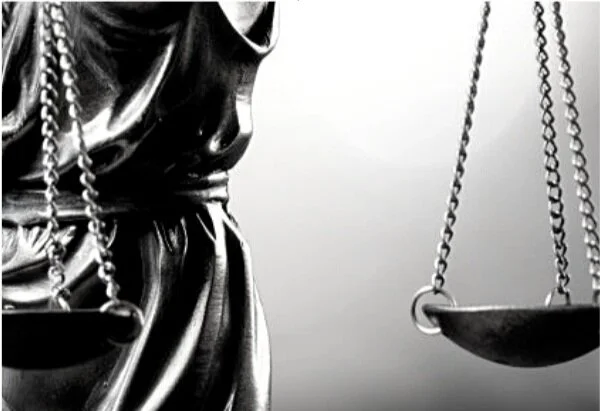Spirituality and Mental Health: So What’s The Connection?
/People often go “deer-in-the-headlights” whenever the topic of spirituality is brought up. Either they think they are going to hear some New Age “fluff,” or they think it is just not part of their own experience and ability to understand. Neither could be further from the truth.
Spirit is a part of who we are—arguably, the most important part of who we are—even though we don’t necessarily talk about it that way. But some research, like a recent poll from 2016, indicates that that 84% of people questioned confirmed they have had experiences[1] outside their “ordinary self.” Some believe in the idea that we are “spiritual beings” living a “human experience,” and not the other way around. This concept was taught by the likes of philosopher Pierre Teillhard de Chardin[2], and more recently adopted by Dr. Wayne Dyer and author Stephen Covey, though attribution for this theory has been disputed[3, 4].
(L-R) Dr. Wayne Dyer, Philosopher Pierre Teillhard de Chardin, Author Stephen Covey (via Goodreads)
Defining Spirituality
So, what exactly does the word “spirituality” mean? Definitely, there is not an easy answer. Spirituality means different things to different people. Here are some of my own ideas:
Spirituality is the part of us that yearns to find meaning and purpose in life. It is the part of us that is present all the time, waiting to guide and inspire us. It is the energy that moves us to be compassionate, loving, and merciful when we might not ordinarily choose to be. It is what allows us to feel things like Joy, Connection, and Peace.
Spirituality is also that part of us, Intuition or Wisdom, that knows instantly from the heart whether a situation is safe or not, even before our brain figures out why. It is something beyond what we can know through the senses. It is that part that gives us an unexpected glimpse that there is a bigger story going on in our lives, and it is that part that is touched by beauty in nature, the arts, or the innocence of a child, that brings us to a place of deep reverence and awe. And, the amazing part is that we have access to this dimension of our being—whether we consciously name it or not—when we quiet the internal chatter and external distractions and pay attention to the authentic “small, still voice” within. It waits patiently for us to tap into it; and sometimes, it just hits us over the head when we least expect it!
“Spirituality is the part of us that yearns to find meaning and purpose in life. It is the part of us that is present all the time, waiting to guide and inspire us. It is the energy that moves us to be compassionate, loving, and merciful when we might not ordinarily choose to be. It is what allows us to feel things like Joy, Connection, and Peace.
Spirituality and Science in Human History
Human beings have long attempted to understand the mystery of life and came to explain their experience in terms of their relationship to a higher power. Religion and Science were irrevocably intertwined.
Then, somewhere over the last couple of hundred years, the Western world came to believe that Religion and Science were in competition with one another for the Ultimate Truth about life. Western thinking moved from belief in God as a Higher Power that guided and even controlled human life, to the notion that Man was the center of creation, and that we could explain everything we experienced through the scientific method. Mystery was dismissed as nonsense.
Along the way, we came to think of the body as a machine and later, the brain as a computer—a mechanistic model for medicine. This model eliminated the wisdom of thousands of years of healing practices that included “spirit” in diagnosing and treating ailments of body and mind. So, when a patient presented with symptoms, the medical field looked for what was broken or needed reprogramming.
Yet, Western medicine has proved that it can’t heal every human suffering, and often, healing happens without any known medical explanation. Depression is one such issue. Sometimes it is seen as an organic problem in the brain that isn’t producing the right chemicals. Sometimes it’s seen as a response to some stressor in the person’s environment, like a divorce or the loss of a job. It can be a combination of both.
Re-Connecting Spirituality and Mental Health
I have met people whose depression wasn’t necessarily exclusive to either category. Their life was what some might describe as “privileged,” but they felt a deep emptiness that fit the description of depression, when in fact, it was their spirit pointing to a deeper need for connection to something bigger than self. Once they accepted that their soul was what was hurting and made some changes in how they used their resources of time and talent, their symptoms disappeared. One person began volunteering at a shelter, while another made a commitment to spend more time with her grandchildren, teaching them what she loved—music. The common denominator was finding a purpose for their days.
There are so many case examples like these that point to how often mental and somatic symptoms mask a basic need in the soul or spirit of each person for meaning. We may name symptoms as mental health issues when in reality, the source of the suffering is spiritual. Can we pinpoint exactly where we experience the very real sense of heartbreak after we lose a loved one? Are depression or anxiety—two of the most common and life-limiting mental health issues in our society—symptoms of the body and/or the brain, or are they somewhere in between?
Recent studies are showing that for some people, walking can be as effective in reducing or eliminating mild/moderate symptoms of depression as medication[6]. Another dramatic finding that illustrates the mystery of symptoms came as a result of a 1986 study of Catholic nuns in the Midwest, who exhibited vibrancy in their intellectual pursuits well into their nineties. Results from autopsies on the brains of these nuns, aged 76-106 (who agreed to be part of the study post-mortem), showed significant signs of late-stage Alzheimer’s Disease in one-third of the sisters who had been teaching and writing until the time of their death[7].
How could this be?
One hypothesis points to their daily practice of individual and communal prayer and meditation, as well as their altruism[8]. Today, hundreds of studies continue to point to community connection, living a purpose-driven life, loving-kindness, belief in a higher power, and the power of prayer and meditation as key variables for physical and mental well-being[9, 10].
There is still so much to learn. Native Peoples of every continent, however, have long understood and believed that we are more than just the sum of our working parts—that we are interconnected with all creation and that we are part of a Great Spirit. What are identified today as mental health issues were understood to be a possible imbalance or block of energy in the person’s system, for which a Vision Quest[11] or a sweat lodge[12] might be prescribed to help the person reclaim the missing part of their soul or spirit.
Present-Day
Today, though we often use the word “energy” in place of “spirit,” we have begun to move back to a more holistic understanding of human beings. Medical doctors are asking about life stressors during diagnostic interviews. People are returning to such methods as Mindfulness[13], acupuncture[14], cranial-sacral work[15], Reiki[16], Healing Touch[17], psychic[18] and shamanic work[19] (to name just a few) to help heal physical and mental health issues.
In addition, there has been more focused work in the last 60 years that seems to confirm that trauma affects not only the individual, but that these traumatic effects can be passed down to family members through the generations[20-22]. Some visionaries have even suggested, with increasing acceptance, that the spiritual wounds from the collective trauma of slavery and genocide in US history are still operative in the suffering of victims and perpetrators alike in our own time[23].
Lessons From the Journey
This blog series, Lessons from the Journey, will focus on what I have learned about the interconnection of mind, body and spirit. I will describe some of what led me to spiritual practices such as Reiki, Mindfulness, the 12 Steps, Zen, and most recently, Constellation work. Rather than citing studies, especially the most promising recent research from Quantum Physics, I will describe some of my own challenges with mental health issues, as well as those of people I have worked with as a psycho-spiritual therapist, Reiki practitioner, spiritual companion, and Constellation facilitator over the last 30 years. I will also include spiritual practices that have helped me stay in balance to attain an optimum sense of well-being—to me, the true indicator of mental and physical health.
Blessings for a peaceful and growth-filled New Year!
Linda
Stay tuned and be sure to add your own experiences connecting mental health, therapy and spirituality.
The more we share our journey, the more we will learn from each other. Share your comments at the bottom of the page.
© Whatismyhealth
Special thanks to our sources and attributions:
1 https://aeon.co/essays/religion-has-no-monopoly-on-transcendent-experience
2 Teilhard De Chardin, Pierre. 1959. The Phenomenon of Man [Le Phénomène Humain]. New York, New York: Harper and Row, Inc.
3 Furey Robert J. 1993. The Joy of Kindness. New York, New York: Crossroad, p. 138 (attribution, not a source).
4 Gurdjieff, G.I. 1994. in Beyond Prophecies and Predictions: Everyone's Guide to the Coming Changes, by Moira Timms. New York, New York: Ballantine Books, p. 62 (attribution, not a source).
5 Covey, Stephen. 2000. Living the 7 Habits : Stories of Courage and Inspiration, New York, New York: Simon and Schuster, p. 47.
7 Snowdon, David. 2002. Aging with Grace: What the Nun Study Teaches Us About Leading Longer, Healthier, and More Meaningful Lives. New York, New York: Bantam Books.
8 https://dementiacareinternational.com/2007/03/the-nun-study/
9 Snowdon, David. 2002. Aging with Grace: What the Nun Study Teaches Us About Leading Longer, Healthier and More Meaningful Lives. New York, New York: Bantam Press, p. 256.
10 Carol Brayne. International Journal of Epidemiology, Volume 31, Issue 4, August 2002, Page 879.
11 Robbins, Rockey. 2018. "Vision Quest: The Intersection of Native American Spirituality and Family Therapy" in Engaging with Spirituality in Family Therapy: Meeting in Sacred Space, Edited by Trimble, David, AFTA Springer Briefs in Family Therapy.
12 https://www.gaia.com/article/native-american-sweat-lodge-ceremony
13 Kabat-Zinn, Jon. 1994. Wherever You Go, There You Are: Mindfulness Meditation in Everyday Life. New York, New York: Hachette Books.
15 https://www.medicalnewstoday.com/articles/318490.php
16 https://www.medicalnewstoday.com/articles/308772.php#reikis_healing_power_what_is_the_evidence
17 https://www.healingtouchresearch.com/
18 Choquette, Sonia. 2011. The Psychic Pathway: Reawakening the Voice of Your Soul. New York, New York: Random House LLC.
19 http://www2.uwstout.edu/content/lib/thesis/2005/2005bockn.pdf
20 "The Ghost in Our Genes". 2005. YouTube documentary. BBC 5 part Nova Series. https://www.youtube.com/playlist?list=PL78B298BCF74FE93C
22 https://www.psychologytoday.com/us/basics/epigenetics
23 Iversen, Lisa. 2009. Ancestral Blueprints: Revealing Invisible Truths in America’s Soul. Canada: Hignell Book Printing.



























Understanding our attachment styles can help us bypass destructive strategies and find a more authentic connection.